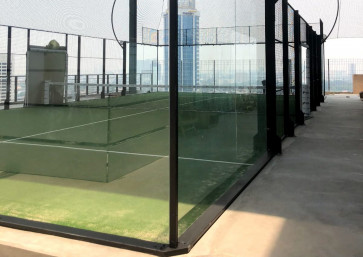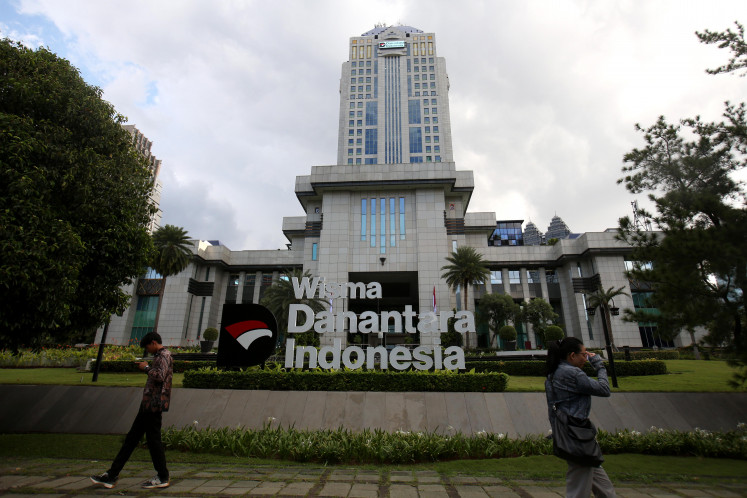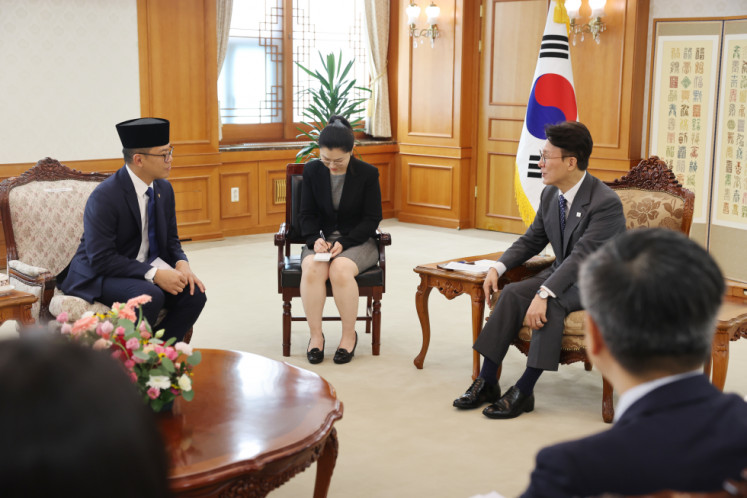Popular Reads
Top Results
Can't find what you're looking for?
View all search resultsPopular Reads
Top Results
Can't find what you're looking for?
View all search resultsIndonesia holds key to future of ASEAN physical connectivity
Indonesia holds the key to the future of ASEAN’s physical connectivity as the 10-member association looks to finance major infrastructure projects that are located in this country
Change text size
Gift Premium Articles
to Anyone
I
ndonesia holds the key to the future of ASEAN’s physical connectivity as the 10-member association looks to finance major infrastructure projects that are located in this country.
Under the Master Plan on ASEAN Connectivity (MPAC) 2025 seeks to establish sustainable infrastructure, digital innovation, seamless logistics, regulatory excellence and people mobility.
On Tuesday, as many as nine ASEAN infrastructure projects, worth between Rp 600 trillion (US$45.84 billion) and Rp 700 trillion, were presented to potential investors during the ASEAN G2B Infrastructure Investment Forum in an attempt to find someone to finance them.
Of the nine, eight belong to Indonesia and one belongs to Laos.
National Development Planning Board (Bappenas) head Bambang Brodjonegoro said that Indonesia was in a unique position as the largest economy and the most populated among the ASEAN countries, which has consequently turned it into a potential market for the region to invest in physical connectivity
projects.
“We are encouraged by the fact that MPAC 2025 has incorporated various initiatives in addressing a wide range of issues that include the issue of domestic connectivity. This is an important aspect for Indonesia as we are also in the process of strengthening our connectivity pattern,” he said.
The ones belonging to Indonesia include the Kertajati Airport in West Java, the Kuala Tanjung Port in North Sumatra, the Soekarno-Hatta airport railway connecting Jakarta and Banten and the Jakarta-Surabaya high-speed railway connecting Jakarta and East Java.
Kuala Tanjung, for instance, is expected to be the future hub port for western Indonesia.
State port operator Pelindo I, which is carrying out the construction, has stated that the new Rp 37 trillion port will have twice the capacity of what is currently the country’s busiest port in Tanjung Priok, with Kuala Tanjung handling 20 million total equivalent units (TEUs) in its final phase in 2025.
Indonesia lags behind its ASEAN neighbors in terms of competitiveness. It was ranked 41st in the World Economic Forum Global Competitiveness Index (GCI) in 2016-2017 among 138 countries, below Malaysia, Singapore and Thailand. It also ranked 60th in terms of infrastructure, below Malaysia at 24th.
Some ASEAN countries have already taken steps to fulfill the regional connectivity plan, including Cambodia and Thailand, which expect their cross-border 6.5-kilometer-long railway to be finished by the end of this year.
That line is to be part of the Kunming-Singapore railway that will connect China with ASEAN countries.
Vice President Jusuf Kalla, who attended the investment forum, said the government would not have the required funding to cover all infrastructure development, and he reiterated the importance of private investors for the projects.
“Road, port, airport, electricity and telecommunications projects can bring in profits. It’ll be better if private investors can manage them, so the government can focus on noncommercial projects,” he said.
Projects in Indonesia are estimated to require $450 billion until 2019, while all infrastructure developments in ASEAN countries are projected to cost $3.3 trillion until 2030.
Indonesia has set aside Rp 387.3 trillion in next year’s state budget, an increase from Rp 317.8 trillion in the 2016 revised state budget.
ASEAN connectivity division head Lim Chze Cheen stated that as the final list of potential infrastructure projects was still being developed, Indonesia might have more infrastructure projects than other countries in the region.
“Indonesia is a large country. Technically you will have more infrastructure that needs to be built,” he said.










